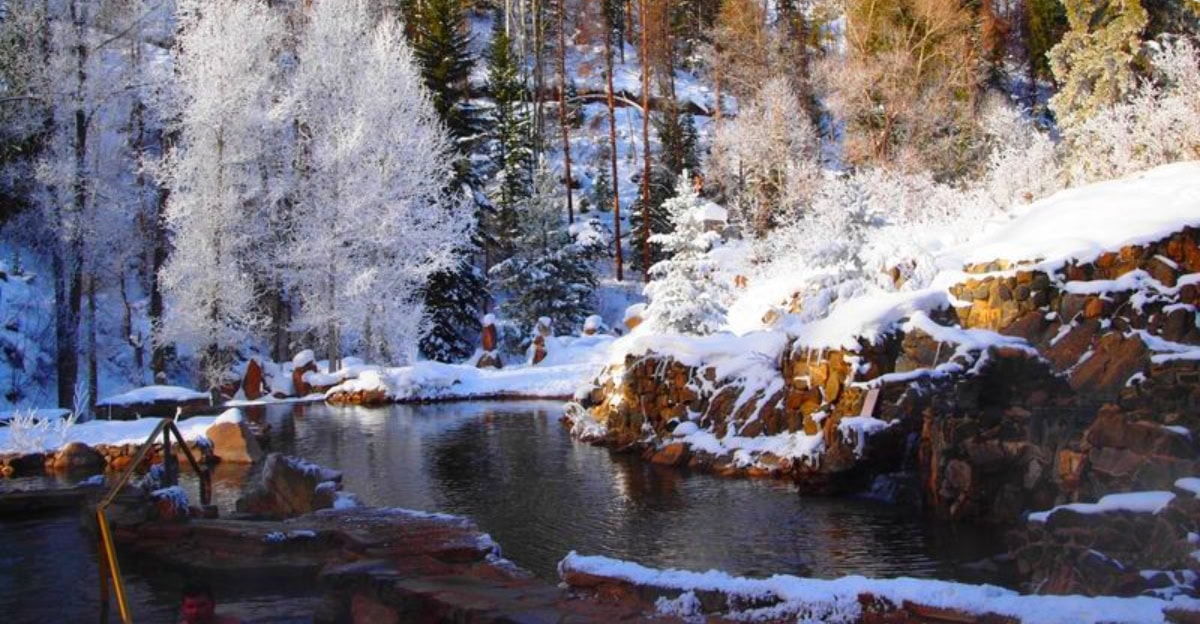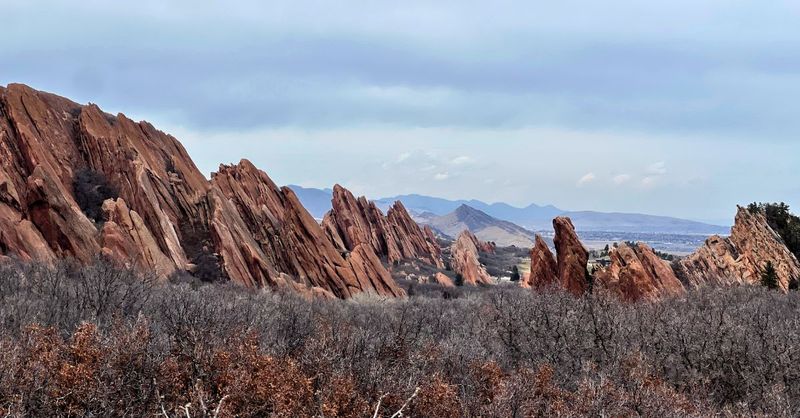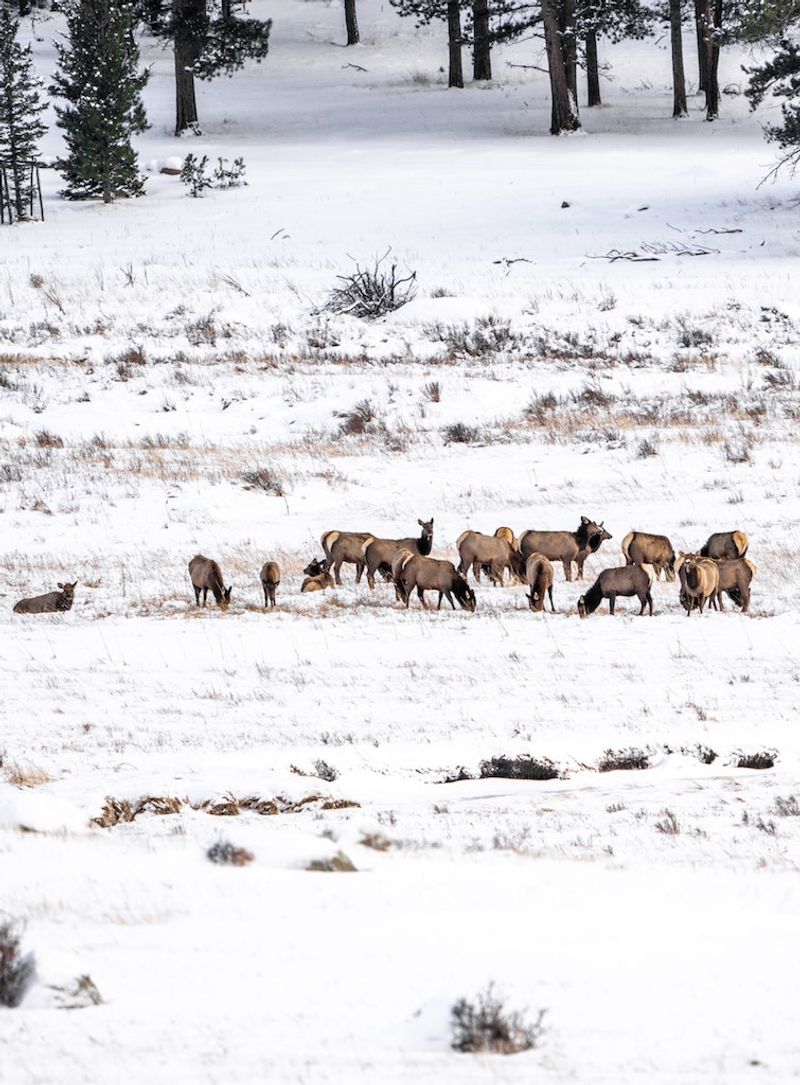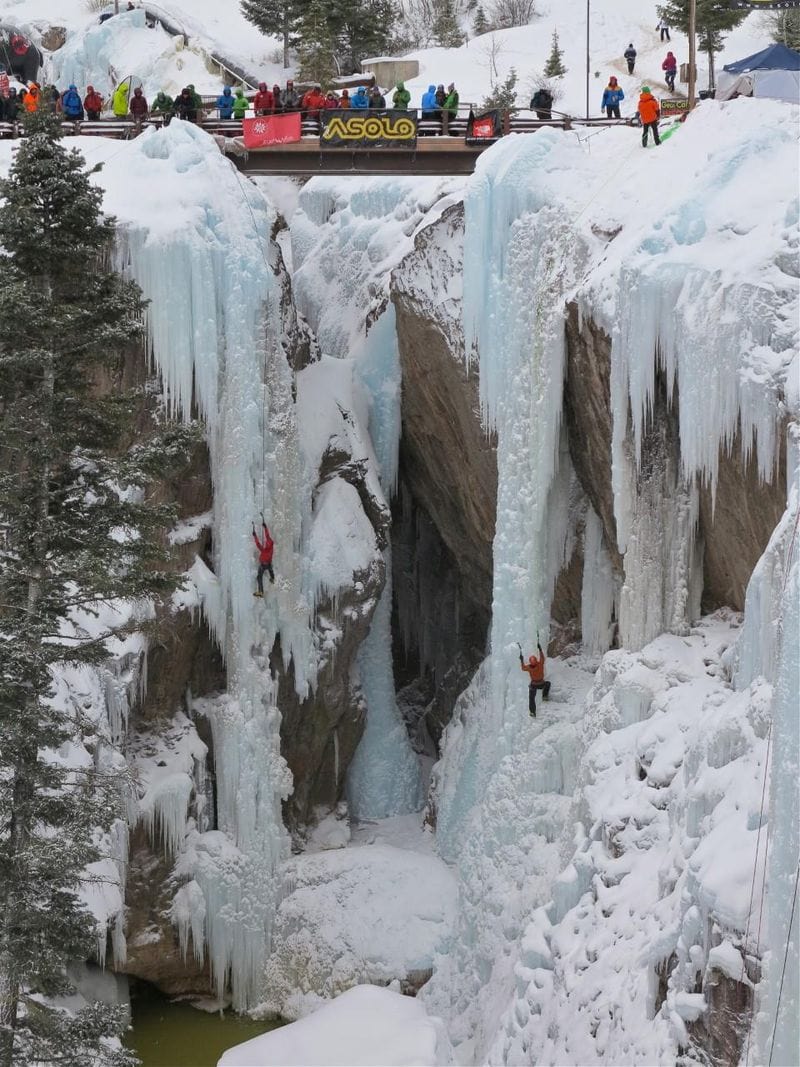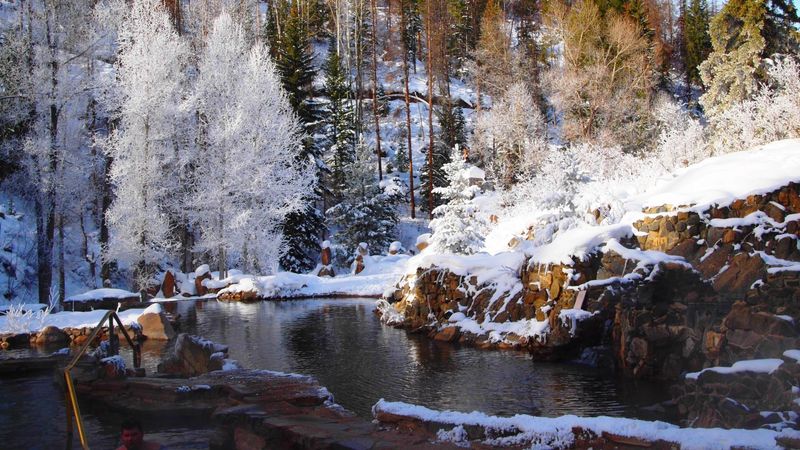Colorado’s trails are famous for their stunning fall colors, but they hold so many more treasures waiting to be discovered. When the aspen leaves stop glowing gold, the mountains don’t close up shop – they simply reveal different kinds of magic. From geological wonders to wildlife encounters, Colorado’s wilderness offers year-round adventures that many visitors never get to experience.
Ancient Rock Formations Tell Earth’s Story
Geological marvels await hikers who venture beyond the aspen groves. Colorado’s mountains hold rock layers dating back over 300 million years, with fossils embedded in seemingly ordinary trail-side stones.
At Roxborough State Park, just outside Denver, dramatic red sandstone formations jut skyward like giant shark fins frozen in time. These towering monoliths were once ancient sand dunes, now transformed through millions of years of geological pressure.
Along the Fountain Valley Trail, keep your eyes peeled for tiny marine fossils – evidence that this mile-high landscape once lay beneath a vast prehistoric sea. The trail’s interpretive signs help decode this geological timeline, revealing how Colorado’s famous landscapes were sculpted by forces that continue reshaping our planet today.
Ghost Towns Whisper Mining History
Abandoned mining settlements dot Colorado’s backcountry, accessible only by trails that once served as lifelines for frontier communities. These weathered wooden structures tell stories of boom-and-bust cycles that shaped the state’s development.
The Mayflower Gulch trail near Copper Mountain leads to a perfectly preserved ghost town where miners once sought fortune. Collapsed cabins and rusted mining equipment create an eerie time capsule against the backdrop of jagged peaks.
Winter transforms these ghost towns into something even more magical – snow-dusted buildings stand in stark contrast against blue skies, and fewer visitors mean you might have these historical treasures entirely to yourself. For history buffs, these forgotten settlements offer glimpses into the harsh realities and boundless optimism of Colorado’s mining era.
Wildlife Corridors Become More Visible
Fall’s end marks the beginning of wildlife watching season on many Colorado trails. As leaves drop from trees and undergrowth thins, animals become easier to spot against the simplified landscape.
Rocky Mountain National Park’s quieter winter trails offer prime opportunities to spot elk herds moving through snow-covered valleys. Moose frequent willow-lined creeks along the Illinois River Trail in State Forest State Park, while bighorn sheep navigate rocky slopes near Georgetown.
Animal tracks in fresh snow tell stories invisible during other seasons – revealing how foxes hunt for mice beneath the snowpack, or how mountain lions patrol their territory. Bring binoculars and move quietly – dawn and dusk offer the best viewing opportunities when animals are most active, and the reduced number of hikers means wildlife behaves more naturally.
Frozen Waterfalls Create Ice Climbing Playgrounds
Summer hikers often photograph Colorado’s cascading waterfalls, but few witness their winter transformation into magnificent ice sculptures. These frozen formations attract ice climbers from around the world seeking vertical adventures.
Ouray Ice Park features over 200 named ice routes formed by water deliberately sprayed onto canyon walls to create climbing terrain. For non-climbers, trails around the park offer spectacular viewing opportunities to watch climbers tackle these glistening blue columns.
Near Steamboat Springs, Fish Creek Falls transforms into a 280-foot frozen masterpiece accessible via a short trail suitable for most fitness levels. The thundering summer cascade becomes eerily silent, replaced by delicate ice formations that capture sunlight like stained glass. These ephemeral ice features exist only during the coldest months, making them special rewards for year-round adventurers.
Hot Springs Reward Cold-Weather Explorers
Hidden throughout Colorado’s mountains are natural hot springs – geothermal treasures that feel particularly magical when accessed via snow-covered trails. The contrast between frigid air and mineral-rich warm water creates an unforgettable wilderness spa experience.
Conundrum Hot Springs requires a challenging 8.5-mile hike near Aspen, but rewards winter trekkers with 102-degree pools surrounded by snow-capped peaks. The steam rising from these primitive pools creates otherworldly scenes as it freezes instantly on nearby trees.
For a less demanding adventure, Radium Hot Springs sits alongside the Colorado River, accessible via a 1-mile hike through the White River National Forest. Winter visitors often have these pools entirely to themselves – the ultimate reward after a chilly hike. Remember to practice Leave No Trace principles at these fragile natural features that remain pristine only through visitors’ respect.
